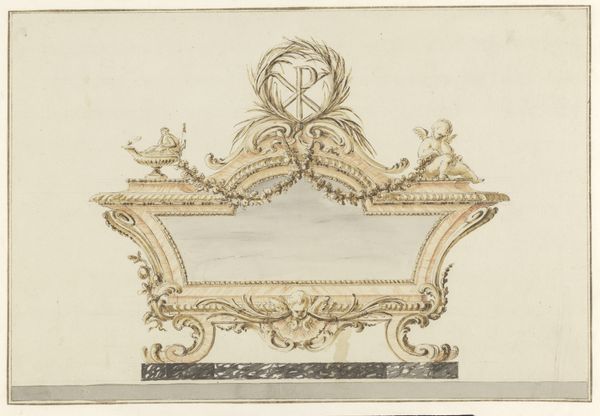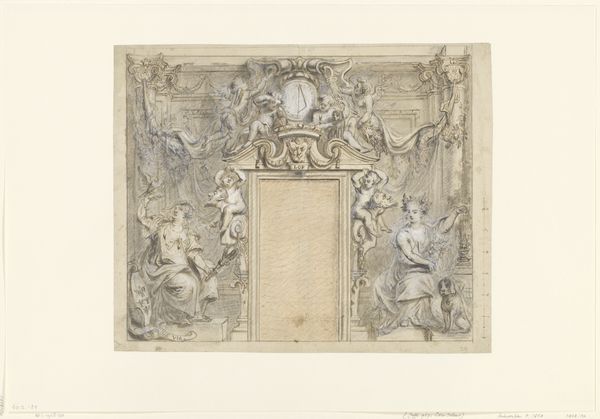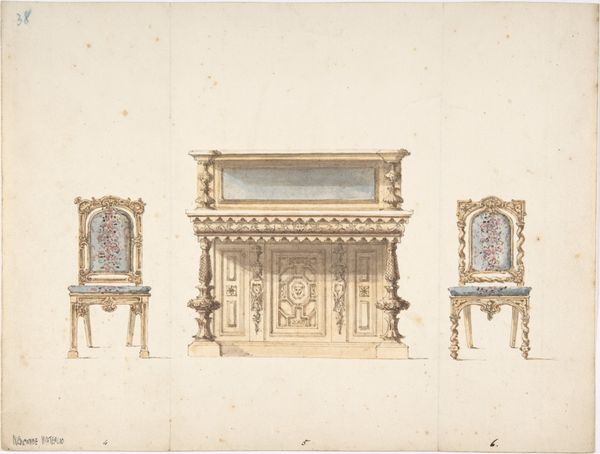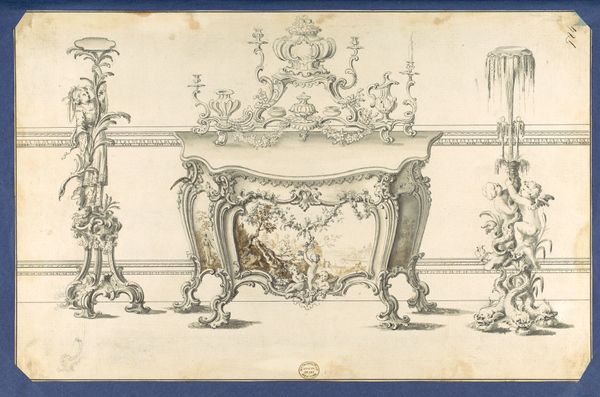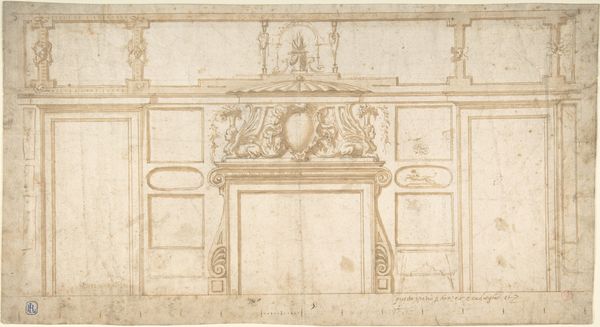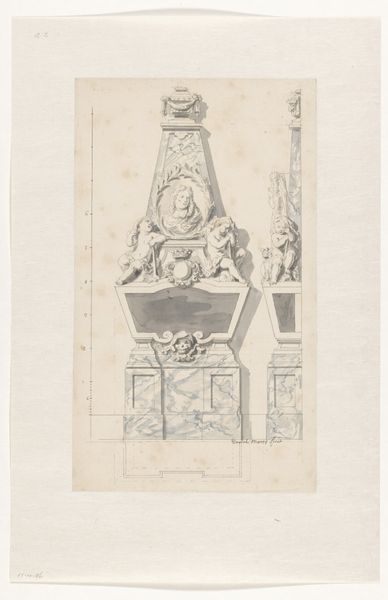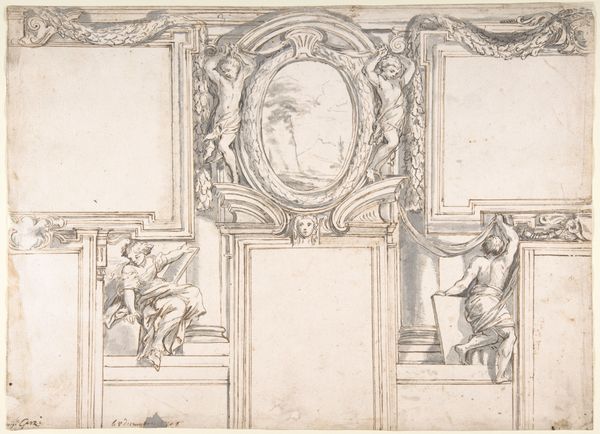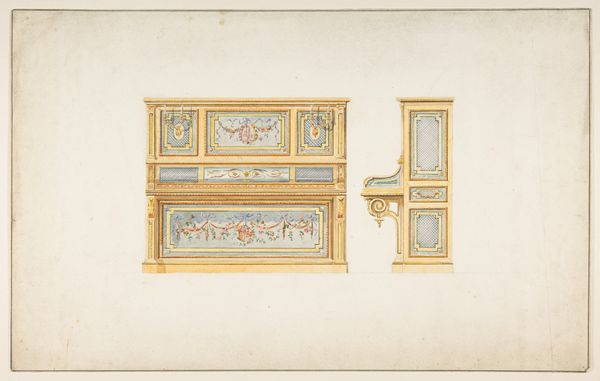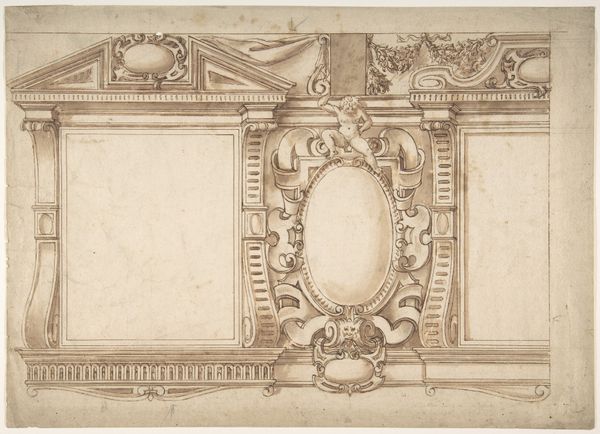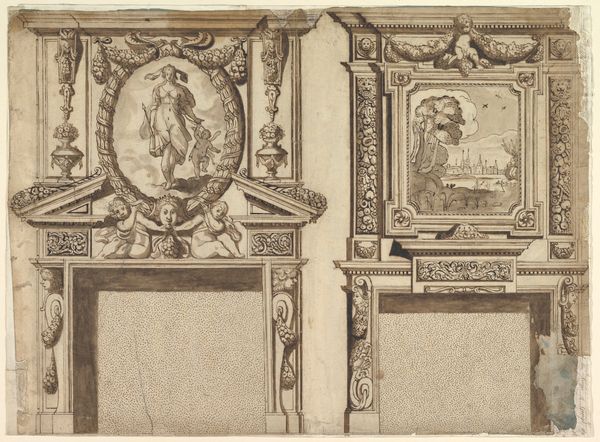
Ontwerp voor het altaar van de heilige Camillo de Lellis voor de Santa Maria Maddalena in Rome c. 1770
0:00
0:00
#
beige
#
aged paper
#
toned paper
#
muted colour palette
#
parchment
#
light earthy tone
#
retro 'vintage design
#
tea stained
#
nude colour palette
#
warm toned green
Dimensions: height 430 mm, width 574 mm
Copyright: Rijks Museum: Open Domain
Editor: We're looking at "Ontwerp voor het altaar van de heilige Camillo de Lellis voor de Santa Maria Maddalena in Rome," a design for an altar by Luigi Valadier, dating from around 1770. It's rendered on what looks like aged paper, maybe parchment. I'm struck by how the muted colors give it such a neoclassical feel. What catches your eye about this design? Curator: Well, seeing a design like this, it's impossible not to consider the broader forces at play. This was the era of the Grand Tour. How might the fashion for all things Italian, especially classical Roman, in Northern Europe affect the patrons commissioning designs like this? Do you see a conscious effort to invoke the "sublime" of classical art, but tailored to a specific religious and social function? Editor: I think so, there's this sense of grandiosity but also reverence, especially with the angels. Curator: Exactly. Think about the politics of imagery at the time. Religious institutions still held considerable power, but the Enlightenment was challenging traditional authority. Altars were potent tools for visually reinforcing the Church's message and attracting people. How does this design participate in that conversation, and potentially negotiate it? Editor: So, the design isn't just beautiful, but a kind of argument, showcasing the Church’s power through classicism? Curator: Precisely! Consider also the scale and proposed location; did Santa Maria Maddalena represent a crucial site for disseminating certain theological ideas, particularly associated with Saint Camillo de Lellis, and did that dictate some of Valadier's artistic choices? Understanding those connections illuminates the social life of this design. Editor: That makes you look at it in a whole new light, it is more than just the drawing but the historical and political significance, amazing! Curator: Indeed! It prompts a greater appreciation when we are aware of these historical and socio-political currents that run beneath even the most seemingly straightforward design.
Comments
No comments
Be the first to comment and join the conversation on the ultimate creative platform.
